Customer experience is the core of any business and ensuring a good customer experience essential for every business to be successful. And this is possible only when you give due importance to your customers. A growth-oriented business always keeps its customers at the heart of the business. How? They are always in tune with the customers’ needs by listening to their feedback and suggestions.
Listening to the customers’ voices helps you to find out how customers perceive your products and services. In addition, feedback responses also give you a fair idea of your customers’ preferences, behavior, and expectations from your business. Collecting this information from the customers and leveraging it to increase customer satisfaction is known as customer experience management.
In this article, we will explore what is customer experience management, its importance, how it works, how it is different from customer relationship management, and some types of customer experience tools that you can use for your business.
TL;DR
-
Customer Experience Management is the process of strategically managing all customer interactions and experiences at every touchpoint throughout their entire customer journey by measuring customer experience through customer feedback, analyzing feedback, and taking actions to improve customer satisfaction and overall experience.
-
Managing customer experience is important for business and provides many benefits - enhanced customer loyalty and satisfaction, competitive advantage, increased CLV, better brand reputation, better customer retention and more customers joining the business.
-
CXM works by implementing strategies and steps like creating and maintaining customer profiles, personalizing customer interactions, and collecting the right information and data at the right time. To manage customer experience effectively, you need to focus on effective customer journey mapping and building great experiences at all touchpoints.
-
Customer experience management is different from customer relationship management as CXM focuses on how customers perceive their experience with an organization and CRM focuses on how customers look like to the organization.
-
There are various types of tools which are useful in CXM - survey and feedback management tools, CRM tools, customer support platforms, analytics and reporting tools, social media listening tools, customer journey mapping tools, live chat software, personalization engines, and VoC platforms.
-
A customer experience management platform like Zonka Feedback helps you to manage customer experience in many ways through its features like multichannel feebdack collection, real-time notifications and alerts, customized and white-labelled surveys, data analysis and reporting, and integrations with popular and useful tools.
Elevate CX with Customer Feedback🔥
Collect real-time, in-moment feedback at all touchpoints in customer journey and leverage feedback insights to transform customer experience.

What is Customer Experience Management?
Customer Experience Management refers to the process of strategically managing and optimizing every interaction or experience customers have with the business throughout their entire customer journey. It includes understanding the customers' journey, collecting customer feedback, analyzing and measuring customer experiences, and taking the right steps to enhance customer loyalty and satisfaction, and deliver great experiences.
According to Bernd Schmitt, a renowned marketing thinker, CXM is “the process of strategically managing a customer’s entire experience with a product or company. It represents the discipline, methodology or process used to comprehensively manage a customer’s cross-channel exposure, interaction, and transaction with a company, product, brand or service.”
While planning your CXM strategies, there are a few important things to be considered to assure yourself that your strategy works. In addition, these pointers give you a clear picture of how customers perceive:
-
Organizational commitment to the customers
-
Efforts to deliver great customer experiences
-
Ways to inspire staff to deliver great experiences
-
Ways to fulfill customers’ needs and goals
-
Measuring customer experience across touchpoints
-
Gauging the impact of brand loyalty
Let's explore how customer experience management is important for your business.
Why is Customer Experience Management (CXM) important?
Customer experience management (CXM) helps you get a deeper understanding on how your customers perceive the experiences they go through with your products, services, interactions, and overall business. Here are some benefits of CXM that can help you understand its importance for your business.
-
Enhanced Customer Satisfaction and Loyalty - CXM helps you build positive customer experiences which ultimately lead to higher satisfaction levels. Satisfied customers are more likely to become loyal customers and may also act as brand advocates, promoting the business to others.
-
Competitive Advantage - In markets where products and services are similar, the customer experience becomes a key differentiator. Providing an exceptional customer experience sets a business apart from its competitors.
-
Increased Customer Lifetime Value - A positive customer experience contributes to higher customer retention rates and increases the lifetime value of each customer. Satisfied customers are more likely to make repeat purchases and engage in long-term customer relationships with the brand.
-
Better Brand Reputation and Goodwill - The way customers perceive a brand is closely tied to their experiences. Consistently positive experiences contribute to a positive brand image and reputation, while negative experiences can harm the brand.
-
Attracting New Customers - CXM leads to good customer experiences. Satisfied customers are more likely to recommend a business to others. Positive word-of-mouth marketing generated through good customer experiences can be a powerful driver of new customer acquisition.
-
Better Customer Retention - Effective CXM strategies help identify and address issues that may lead to customer dissatisfaction. By addressing these issues proactively, businesses can reduce customer churn and retain a more significant percentage of their customer base.
Let's learn how CXM works to fetch you these benefits.
How does Customer Experience Management (CXM) works?
The efforts to enhance the customer experience start with a commitment to listen to the voice of the customer and embed their feedback and suggestions into the marketing strategy. In an organization, different departments have various customer touchpoints. Considering that, you require a cross-functional CXM environment and brand alignment to ensure a better experience for your customers.
A typical approach for managing Customer Experience involves three stages.
1. Create and maintain customer profiles
Creating and measuring customer profiles enables you to track customers’ journeys at every touchpoint easily. It further helps you get a deeper understanding of their requirements, issues, pain points, and tailored products or services accordingly. You can maintain essential customer data like demographic details, transactional data, and emerging data like geolocation, social media, and more.
For example, you can deploy customer data like contact, response, and transactional history throughout the customers' journey to effectively understand their requirements and deliver relevant offers. Subsequently, it simplifies the behavioral analysis and improves propensity scores and customer value.
Thus, maintaining customer data helps you to:
-
Track and improve the customer experience at specific touchpoints
-
Understand customer expectations
-
Make better business decisions
2. Personalize customer interaction
After understanding your customers, their behavior, and their requirements, the second stage is interaction. In the entire customer lifecycle, there are different touchpoints where you can interact with your customers. Always focus on the context in which you interact with your customers and make your interaction personalized. Personalization in interaction builds strong customer relationships and creates better experiences.
To create a positive business impression on your customers and drive customer loyalty, treat them personally, provide them relevant, timely, and insightful conversation. Address their issues or pain points personally via calls or emails. It further delights your customers and improves their experience.
You can send them personalized messages on occasions like birthdays, anniversaries, and other occasions. Even if customers don’t interact with you, but this sweet gesture will enhance the customer experience and create a long-lasting impact in their minds.
3. Collect information from the right place at the right time
It is important to analyze each phase of the customer lifecycle, from consideration to evaluation to the post-purchase experience. You can strategize and plan the content, time, and place to interact with your customers based on this analysis. Delivering the right message to the right place at the right time can help you to gather accurate and insightful data. It makes it easy to incorporate the acquired data into your marketing processes and operationalize your business operations accordingly.
Moreover, it is crucial to measure CX at relevant touchpoints of the customers' journey.
Customer Journey Management
Understanding the customer journey is a critical aspect of effective CXM. The customer journey encompasses all the interactions a customer has with a brand, from the initial awareness stage to post-purchase customer engagement. Mapping out this journey helps businesses identify touchpoints, pain points, and opportunities for improvement. Here's how you can manage the customer journey effectively
1. Customer Journey Mapping
-
Identify Touchpoints - Map out all the touchpoints where customers interact with your brand. This includes online and offline channels such as social media, websites, retail stores, customer support, and more.
-
Customer Segmentation - Different customer segments may have unique journeys. Segmenting customers based on demographics or behavior allows for more targeted and personalized journey maps.
2. Multichannel Experience
Customers interact with brands through various channels. Ensuring a consistent and seamless experience across these channels is crucial. Whether a customer engages through a website, social media, or in-store, the experience should align with the brand promise. Capture customer feedback through multiple channels and ensure a good experience across all channels and touchpoints.
-
Offline Surveys - Use offline surveys through tablets, smartphones, and kiosk devices to collect on-premises feedback from your customers at your physical location and deliver exceptional location-based CX.
-
Email Surveys - You can also trigger and send email surveys to the customers at every touchpoint of the customer journey like after a purchase, a bill payment, an issue resolution, and more.
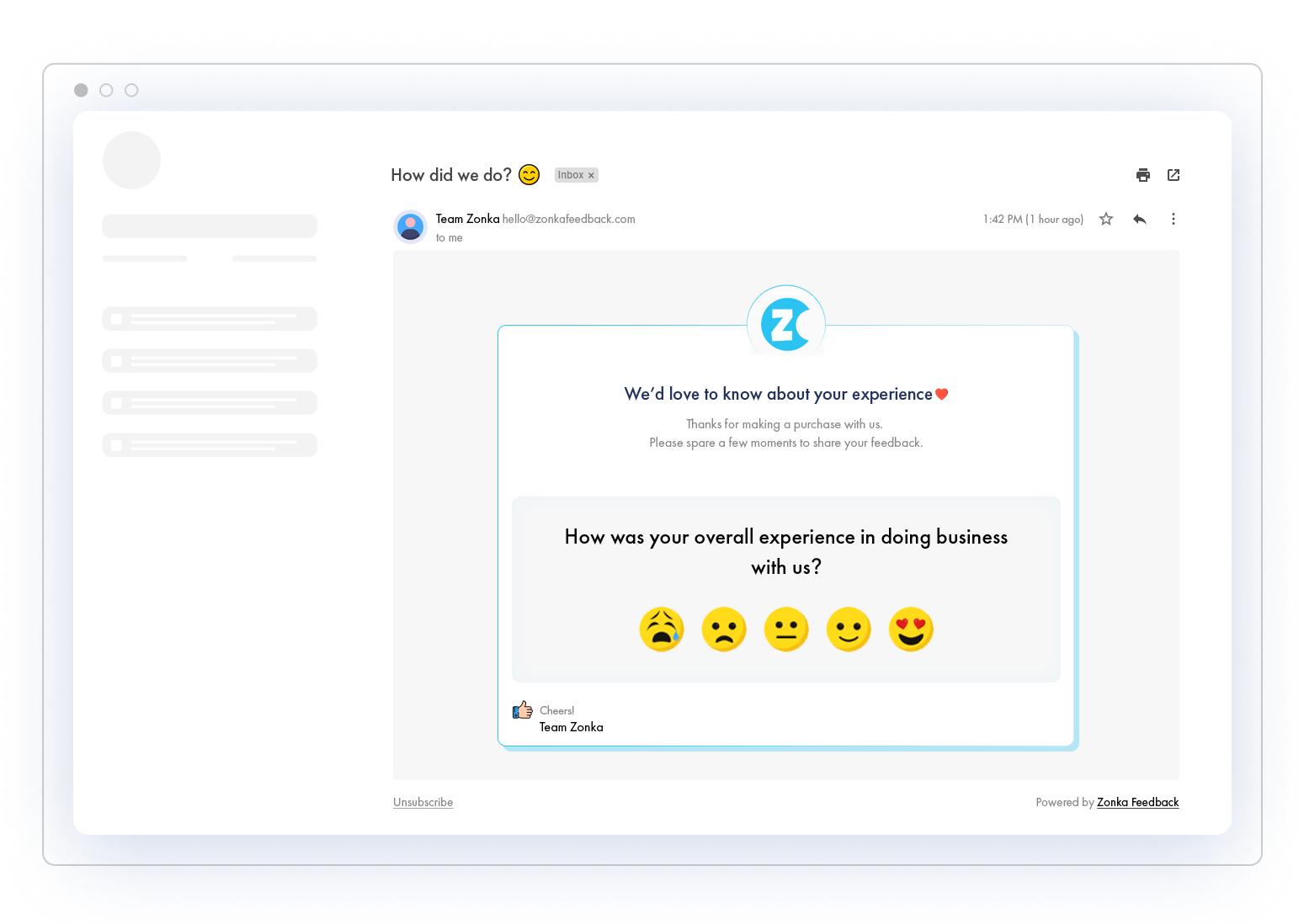
-
SMS Surveys - You can also use SMS surveys to share customer experience survey links with your customers through text messages. Similar to SMS surveys you can also send bulk messages on WhatsApp with survey links to your customers.
-
Website Surveys - Share surveys on your official website through feedback widgets like popup surveys, slideup surveys, and feedback buttons.
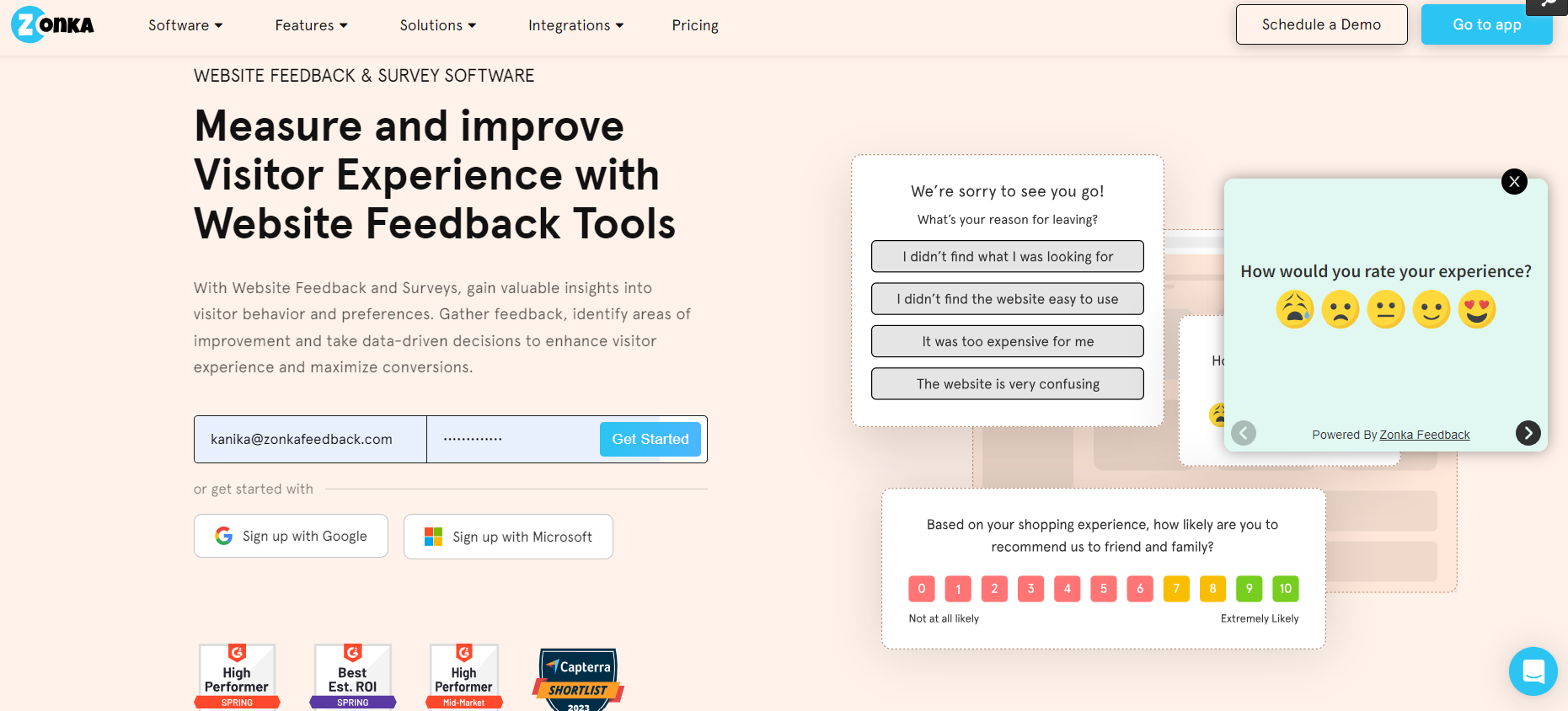
How to do Customer Experience Management?
CXM is mainly about how companies view their customers. CXM enables companies to have a 360-degree view of customers through customer data. There are four critical steps to do Customer Experience Management effectively.
.png)
-
Customer Experience Management Strategy - The first step is to understand customers’ needs and requirements. For this, you need to build customer strategies and maintain customer profiles. In addition, it helps you to strategize how to market to target customers.
-
Customer Journey Map - To enhance the overall customer experience, you should create a Customer Journey Map. It enables you to study and analyze your customer touchpoints in detail and understand how customers interact with your brand.
-
Emotional Bond - Emotion is a great element that connects your customers with your brand personally. Thus, creating a strong brand personality enables you to establish a long-lasting customer relationship. Market your business in a way that your customers get connected with you emotionally.
-
Customer Feedback - Collect customer feedback to measure customer satisfaction and gauge experience in real time through feedback surveys. It will guide you to make better business decisions and ultimately build better experiences for the customers.
Let's explore how customer experience management is different from CRM.
Read About: digital media management software
Customer Experience Management (CXM) vs Customer Relationship Management (CRM)
In the global marketplace, there is a misconception that Customer Experience Management (CXM) and Customer Relationship Management (CRM) are the same things. There is a huge difference between the perspective of CXM and CRM. CXM means how customers perceive the company, and CRM means what customers look like to the company.
In customer experience management strategy, the customer is a game-changer and remains at the center of marketing, sales, and customer support. An improved CXM enables you to drive brand loyalty and repeat business in turn. In contrast, CRM strategy focuses on sales to customers from the company's perspective of capturing more revenue.
CXM relies on the customer’s voice i.e. customer feedback. It quantifies customer reviews and their experiences with a company. It may generate negative feedback but simultaneously allows you to correct the negative perceptions and improve the experience.
.png)
Types of Customer Experience Management Tools you can use
Customer experience management may require you to use a variety of tools for your business. Here are some common types of customer experience management software and tools that you can use in your business to streamline the CXM process.
1. CRM Software
-
Purpose - CRM software helps businesses manage interactions and relationships with customers. It centralizes customer data, tracks communication, and streamlines sales and support processes
-
Use Cases - Managing leads, tracking customer interactions, handling support tickets, and analyzing customer data.
-
Examples - Salesforce, HubSpot, Zoho CRM
2. Feedback and Survey Tools
-
Purpose: These tools facilitate the collection of feedback from customers through surveys, questionnaires, and feedback forms, which ultimately helps in successful customer experience management.
-
Use Cases: Gauging customer satisfaction, understanding preferences, and identifying areas for improvement.
-
Examples: Zonka Feedback, Typeform, Qualtrics.
3. Customer Support Platforms
-
Purpose: Customer support platforms are designed to provide efficient and timely support through various channels, including email, chat, and phone.
-
Use Cases: Handling customer inquiries, resolving issues, and managing support tickets.
-
Examples: Zendesk, Freshdesk, Help Scout.
4. Analytics and Reporting Tools
-
Purpose: Analytics tools help businesses analyze customer behavior, preferences, and interactions on digital platforms.
-
Use Cases: Tracking website traffic, customer engagement, and conversion rates to make data-driven decisions.
-
Examples: Google Analytics, Mixpanel, Hotjar.
5. Social Media Listening Tools
-
Purpose: Social media listening tools monitor and analyze social media platforms for brand mentions, feedback, and industry trends.
-
Use Cases: Responding to customer inquiries, managing brand reputation, and staying informed about market sentiment.
-
Examples: Hootsuite, Brandwatch, Sprout Social.
6. Customer Journey Mapping Tools
-
Purpose: These tools visualize and map the customer journey, helping businesses understand touchpoints and customer interactions.
-
Use Cases: Identifying key touchpoints, pain points, and opportunities for improvement in the customers' journey.
-
Examples: Smaply, UXPressia, Canvanizer.
7. Live Chat Software
-
Purpose: Live chat software enables real-time communication with customers, providing immediate assistance and support.
-
Use Cases: Answering customer queries, guiding website visitors, and enhancing real-time customer engagement.
-
Examples: Intercom, Drift, LiveChat.
8. Personalization Engines
-
Purpose: Personalization engines use data to tailor content and experiences based on individual customer preferences.
-
Use Cases: Delivering personalized recommendations and content to deliver personalized experiences, and offers to enhance the overall customer experience.
-
Examples: Evergage, Dynamic Yield, Adobe Target.
10. Voice of Customer (VoC) Platforms
-
Purpose: VoC platforms capture and analyze customer feedback across various touchpoints, providing insights into customer sentiment.
-
Use Cases: Gathering feedback from surveys, reviews, and social media to understand and improve customer experiences.
-
Examples: Medallia, Clarabridge, Usabilla.
How Zonka Feedback helps with Customer Experience Management?
Zonka Feedback is a survey tool and customer experience management software that helps businesses gather and analyze customer feedback and measure customer experience across various touchpoints of the customers' journey. It contributes to CXM in various ways:
-
Multichannel Feedback Collection - Zonka Feedback helps you to collect feedback through various online and offline channels - offline channels include tablets, smartphones, and kiosk surveys; online channels include email, SMS, and website surveys.
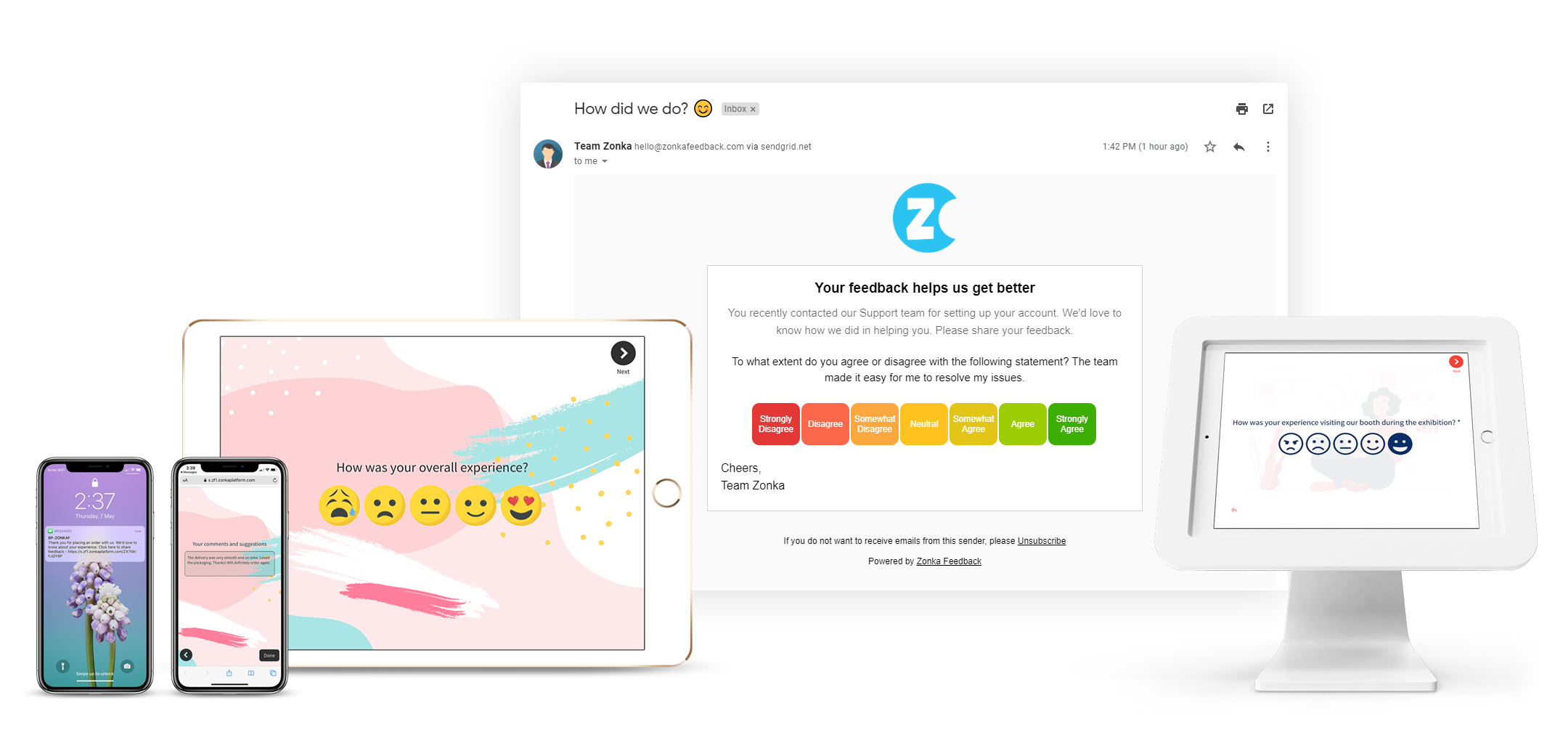
-
Real-Time Feedback - Real-time feedback helps you to address customer concerns promptly. Zonka Feedback provides the capability to collect feedback in real-time, enabling you to respond quickly to customer needs and issues.
-
Customizable Surveys - Zonka Feedback offers customizable survey templates and questionnaires, allowing you to tailor their surveys to gather specific insights. With the feature of white-labelled surveys, you can create surveys that align with the brand's identity and objectives.
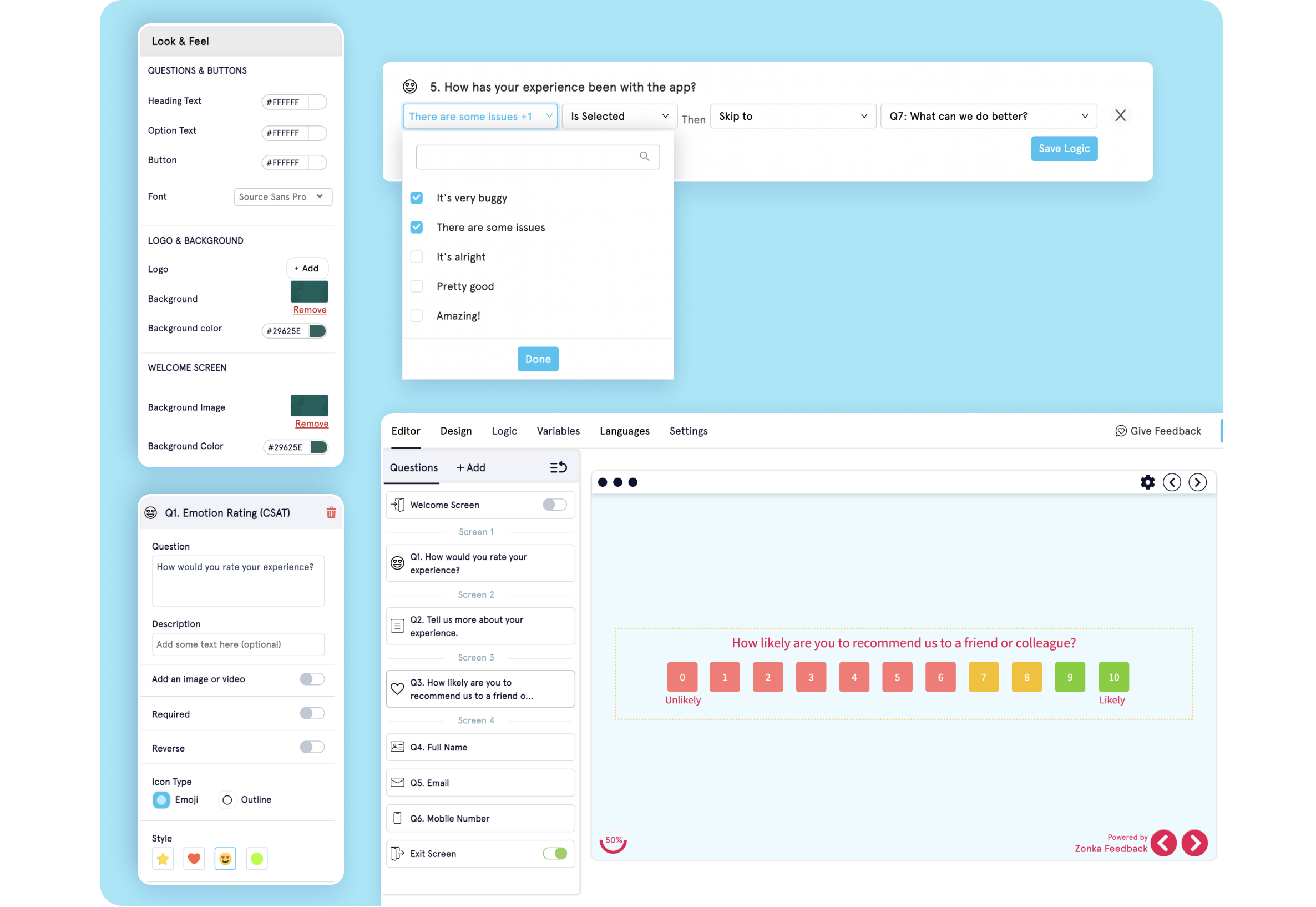
-
Offline Surveys - For businesses with in-person interactions, Zonka Feedback supports offline survey collection. This is particularly useful for gathering feedback in physical locations, such as retail stores, where internet connectivity might be limited.
-
Data Analysis and Reporting - Zonka Feedback is powered with advanced reporting and analytical capabilities with which you can analyze feedback data and get actionable reports which help you identify key performance indicators, feedback trends, and customer satisfaction metrics like NPS, CSAT and CES.
.webp)
-
Feedback alerts and notifications - The platform includes the feature of real-time alerts and notifications based on specific feedback triggers. This enables you to respond swiftly to critical issues or concerns raised by customers.
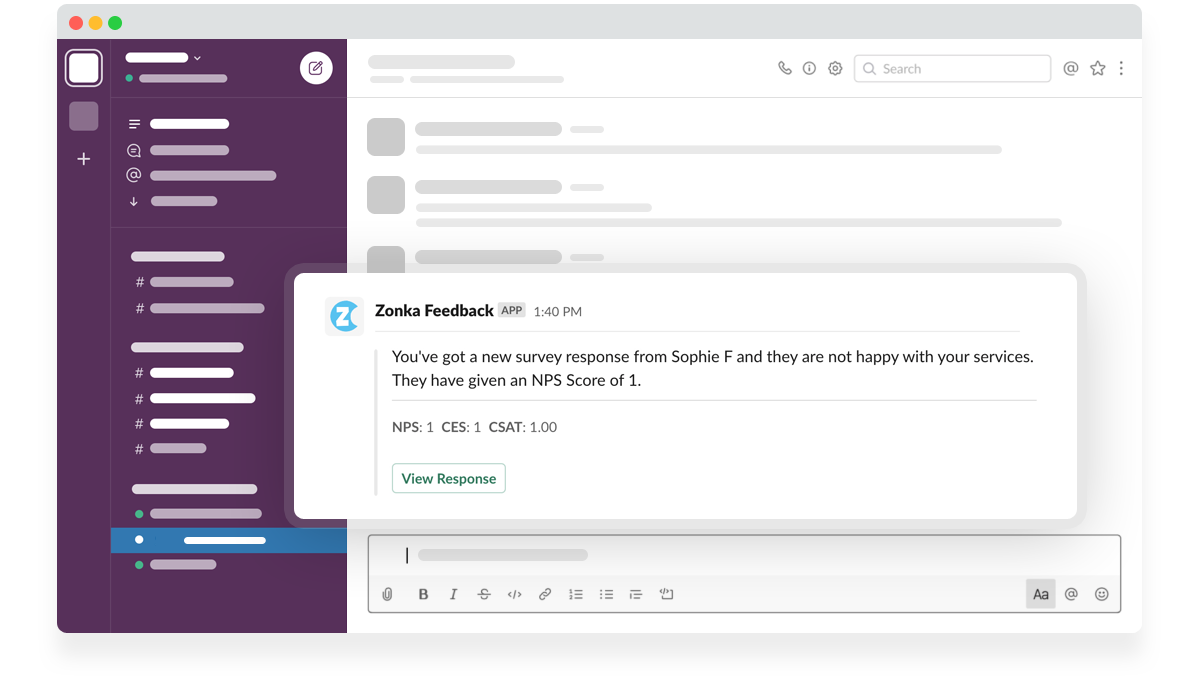
-
Integration with CRM and Other Systems - Zonka Feedback offers integration capabilities with CRM systems and other business tools Salesforce, Mailchimp, Slack, and more. These integrations connect feedback data with customer profiles and other relevant information.
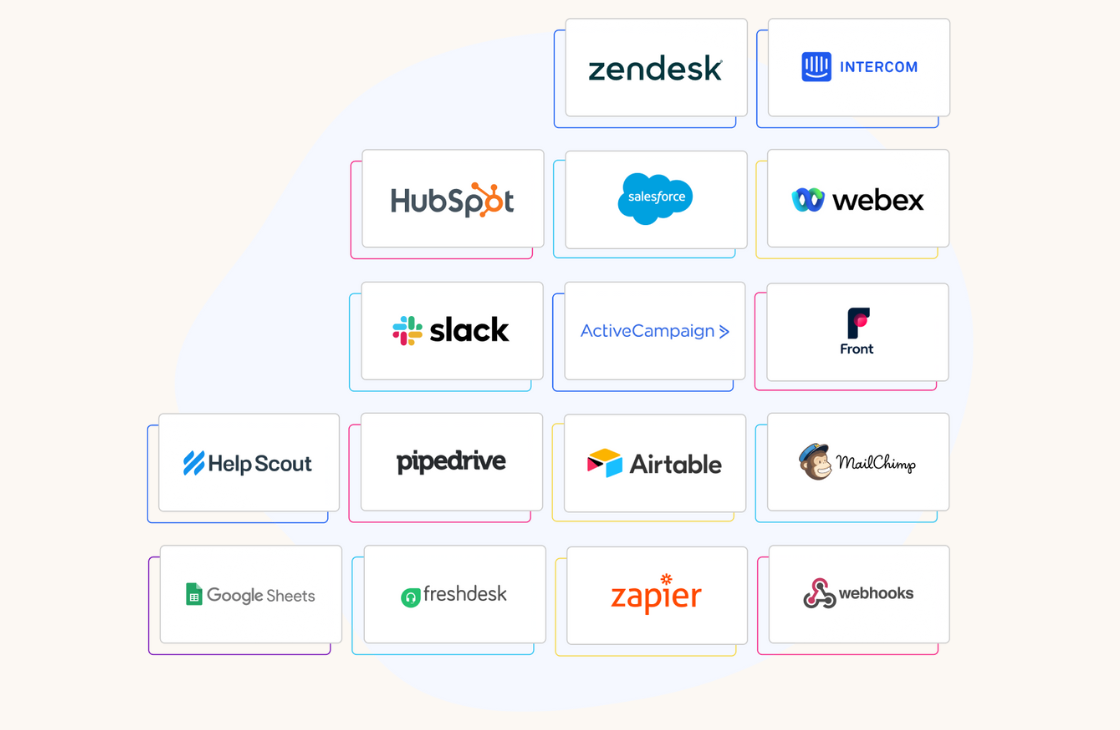
Conclusion
Customer Experience is a critical differentiator that helps to retain customers and attract new customers into the business. Customers not only want quality-grade products but also expect better customer experience and customer service. Quality customer experiences improve customer retention and drive new customers ultimately ensuring better business growth.
Zonka Feedback is one of the best feedback and customer experience management software that you can use for your business to collect feedback, measure and improve customer experience and ultimately grow your business. Schedule a demo and see how it works for your business.











